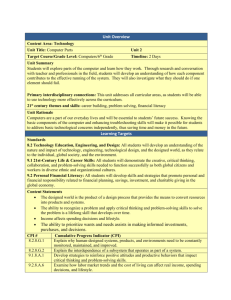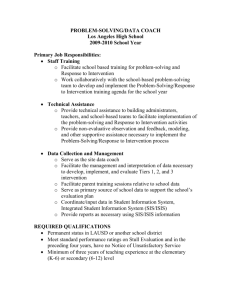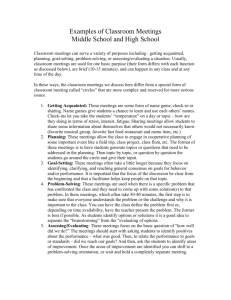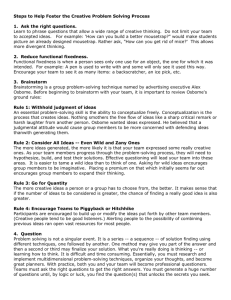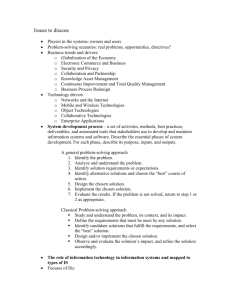Math Differentiation Strategies for Teachers
advertisement
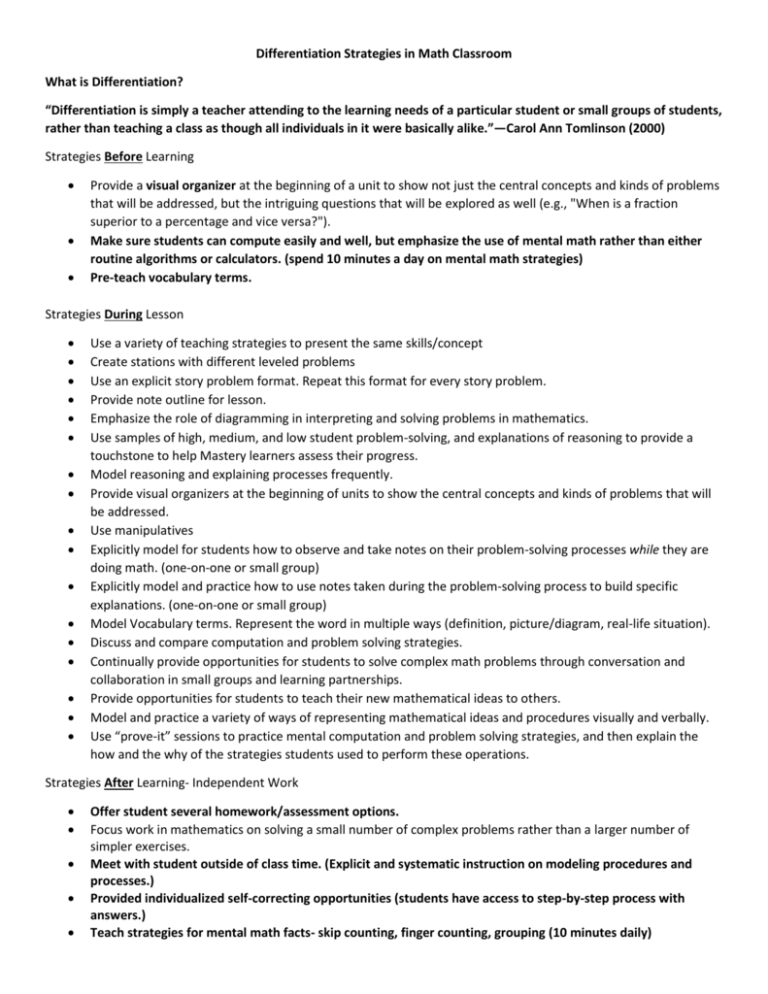
Differentiation Strategies in Math Classroom What is Differentiation? “Differentiation is simply a teacher attending to the learning needs of a particular student or small groups of students, rather than teaching a class as though all individuals in it were basically alike.”—Carol Ann Tomlinson (2000) Strategies Before Learning Provide a visual organizer at the beginning of a unit to show not just the central concepts and kinds of problems that will be addressed, but the intriguing questions that will be explored as well (e.g., "When is a fraction superior to a percentage and vice versa?"). Make sure students can compute easily and well, but emphasize the use of mental math rather than either routine algorithms or calculators. (spend 10 minutes a day on mental math strategies) Pre-teach vocabulary terms. Strategies During Lesson Use a variety of teaching strategies to present the same skills/concept Create stations with different leveled problems Use an explicit story problem format. Repeat this format for every story problem. Provide note outline for lesson. Emphasize the role of diagramming in interpreting and solving problems in mathematics. Use samples of high, medium, and low student problem-solving, and explanations of reasoning to provide a touchstone to help Mastery learners assess their progress. Model reasoning and explaining processes frequently. Provide visual organizers at the beginning of units to show the central concepts and kinds of problems that will be addressed. Use manipulatives Explicitly model for students how to observe and take notes on their problem-solving processes while they are doing math. (one-on-one or small group) Explicitly model and practice how to use notes taken during the problem-solving process to build specific explanations. (one-on-one or small group) Model Vocabulary terms. Represent the word in multiple ways (definition, picture/diagram, real-life situation). Discuss and compare computation and problem solving strategies. Continually provide opportunities for students to solve complex math problems through conversation and collaboration in small groups and learning partnerships. Provide opportunities for students to teach their new mathematical ideas to others. Model and practice a variety of ways of representing mathematical ideas and procedures visually and verbally. Use “prove-it” sessions to practice mental computation and problem solving strategies, and then explain the how and the why of the strategies students used to perform these operations. Strategies After Learning- Independent Work Offer student several homework/assessment options. Focus work in mathematics on solving a small number of complex problems rather than a larger number of simpler exercises. Meet with student outside of class time. (Explicit and systematic instruction on modeling procedures and processes.) Provided individualized self-correcting opportunities (students have access to step-by-step process with answers.) Teach strategies for mental math facts- skip counting, finger counting, grouping (10 minutes daily)




